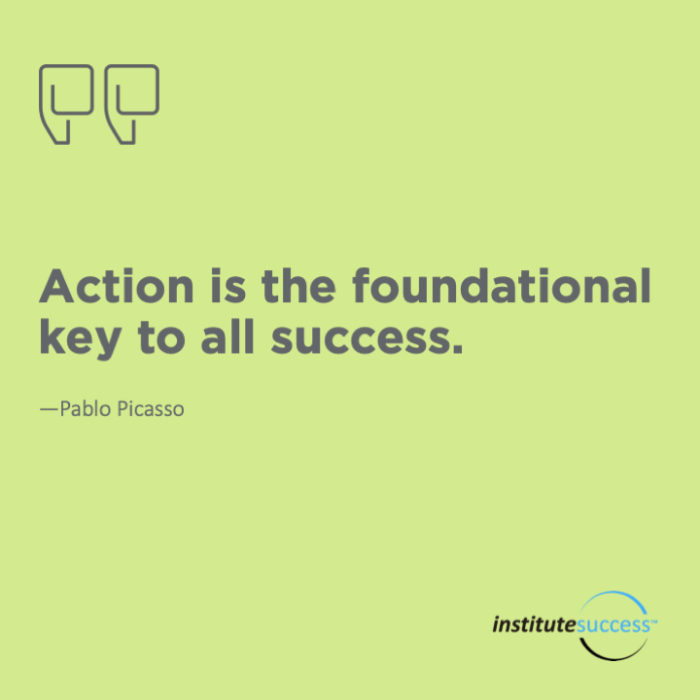Successful public speakers never say these 7 things. This insightful guide reveals the crucial elements that separate effective communicators from those who fall short. From avoiding unnecessary apologies to mastering vocal variety, discover the secrets to captivating audiences and delivering powerful messages.
This article delves into seven common pitfalls that speakers often encounter, offering practical strategies to overcome them. We’ll explore how to project confidence, eliminate distractions, and connect with your audience on a deeper level.
Introduction to Effective Public Speaking
Effective public speaking is more than just delivering a message; it’s about creating a connection with the audience and conveying a message in a way that resonates. It involves a skillful blend of clear communication, captivating delivery, and an understanding of audience dynamics. Successful speakers don’t just present information; they inspire, inform, and influence. This starts with a genuine understanding of the audience’s needs and expectations.Effective public speaking hinges on a potent combination of clarity, engagement, and emotional intelligence.
Speakers must adapt their approach to suit the audience, ensuring that their message is not only well-structured but also relevant and engaging. A speaker’s ability to tailor their delivery and connect with the audience on a personal level ultimately determines the success of their presentation.
Audience Dynamics in Public Speaking
Understanding the audience is paramount in effective public speaking. Speakers need to consider the audience’s background, knowledge level, expectations, and potential biases. This involves recognizing the various perspectives within the audience and adjusting the delivery accordingly. An audience comprised of experts will require a different approach than one composed of novices. Tailoring the message and tone to resonate with the specific audience is critical to success.
Strong Communication Skills and Public Speaking
Strong communication skills are fundamental to public speaking success. These skills encompass not only clear articulation but also active listening, empathy, and the ability to adapt language to different audiences. A speaker must be able to convey their message in a concise, impactful manner, ensuring that the audience grasps the core ideas. A speaker should practice active listening to gauge the audience’s reaction and adjust their delivery in real-time.
Confidence and Composure in Public Speaking
Confidence and composure are essential for effective public speaking. A speaker who appears confident exudes authority and credibility, while composure helps manage nerves and maintain a focused presentation. Public speaking is a performance, and the speaker needs to project a sense of control and assurance, which builds trust and rapport with the audience. Building confidence is a process that includes practice, preparation, and positive self-talk.
Seven Things Successful Speakers Avoid
Successful public speakers avoid certain pitfalls that can detract from their effectiveness. Understanding what to avoid is as crucial as understanding what to do. These pitfalls can range from poor preparation to inappropriate body language, all of which can diminish the impact of a speech. Recognizing these common errors allows speakers to hone their craft and deliver impactful presentations.
- Presenting unprepared material.
- Failing to research the audience.
- Ignoring audience feedback.
- Speaking too quickly or too slowly.
- Reading directly from notes without engaging the audience.
- Lacking confidence and composure.
- Using distracting or inappropriate body language.
Avoiding Unnecessary Apologies
Public speaking, at its core, is about connecting with an audience. A speaker who constantly apologizes for perceived flaws or mistakes undermines their own authority and credibility. This erodes the confidence the audience has in their expertise and message. Building trust and respect hinges on projecting confidence and composure, even in the face of unforeseen challenges.Frequent apologies can diminish a speaker’s perceived competence and make them appear less confident.
This, in turn, diminishes the impact of their message and erodes the audience’s trust. Instead of focusing on potential shortcomings, a speaker should project a sense of competence and control. This can be achieved through effective preparation, clear articulation, and a calm demeanor. By mastering these elements, speakers can confidently address any situation without resorting to excessive apologies.
Projecting Confidence Without Apologies
Effective speakers cultivate confidence through meticulous preparation. Thorough research and rehearsal minimize the likelihood of unexpected errors. By anticipating potential challenges and having backup plans, speakers can react with composure rather than apology. A calm and assured demeanor, even during moments of unexpected difficulty, conveys confidence and strengthens the audience’s trust.
Rephrasing Apologetic Statements
Apology-laden statements often diminish the speaker’s impact. To enhance confidence, rephrase these statements to emphasize solutions or next steps. Instead of saying, “I’m sorry, I seem to have missed a point,” try “Let me clarify that point. As you can see here…” This shift from apology to correction builds trust and reinforces competence.
Successful public speakers know the power of humility and avoiding certain pitfalls. They don’t dwell on material possessions or the things they lack. Instead, they focus on connecting with their audience. Consider this: a shift in perspective, like understanding that some people are happier with less than what you have, can profoundly impact how you approach your audience.
10 reminders that some people are happier with less than what you have can help you appreciate the simple joys that often get overlooked. Ultimately, successful speakers recognize that genuine connection is key, and they avoid boasting or dwelling on personal gain.
Handling Mistakes During a Speech
Mistakes are inevitable. The key lies in how these mistakes are handled. An effective response is not about eliminating errors, but about managing their impact. Acknowledging minor errors in a concise and composed manner, without excessive apologies, demonstrates maturity and control. Instead of dwelling on the error, the speaker can quickly refocus on the intended message.
Effective and Ineffective Mistake Handling
| Ineffective | Effective |
|---|---|
| “Oh, I’m so sorry, I completely missed that point. Let me start again.” (Dwells on the error) | “Let me clarify that point. As you can see from this data,…” (Refocuses on the message) |
| “I’m sorry, I don’t have the exact figure now. I’ll need to get back to you on that.” (Admits weakness) | “While I don’t have the exact figure at this moment, I can assure you that…” (Maintains confidence) |
| “My apologies, I seem to have lost my train of thought. Maybe we can move on to another topic.” (Avoids addressing the issue) | “Let me rephrase that. What I was trying to emphasize was…” (Reframes the message) |
Eliminating Filler Words
Crafting a compelling speech goes beyond just choosing the right words; it’s about how you use them. One crucial element often overlooked is the impact of filler words. These seemingly insignificant pauses can significantly detract from your message, diminishing your credibility and impacting your audience’s engagement. Learning to eliminate them is a key step in enhancing your public speaking abilities.
The Impact of Filler Words
Filler words, such as “um,” “uh,” “like,” and “you know,” are verbal crutches we often use to bridge pauses or fill awkward silences. While seemingly harmless, these words erode the impact of your message. They create distractions, drawing attention away from the substance of your speech and reducing clarity. Audiences perceive speakers who rely heavily on filler words as less confident, less prepared, and less authoritative.
They can subconsciously filter out the important parts of your message because their attention is being diverted by these seemingly insignificant vocalizations.
Common Filler Words to Avoid
Identifying and eliminating filler words is the first step towards more impactful delivery. Here’s a list of frequently used filler words to be mindful of:
- um
- uh
- like
- you know
- so
- well
- basically
- actually
- just
- I mean
These words, though common, can significantly weaken your message. Consciously identifying them in your own speech is a crucial first step towards improvement.
Methods to Eliminate Filler Words
Reducing filler words requires a multi-faceted approach, combining conscious awareness with consistent practice. First, actively listen to yourself speak. Record yourself, and listen back to identify patterns of filler words. Next, identify specific situations where you tend to use these words. Are you using them more often when you’re nervous, or when you’re trying to formulate your thoughts?
Once you understand the context, you can start to develop strategies to address the issue.
Practice and Mindful Speech
A key strategy for eliminating filler words is to practice pausing deliberately. Learn to embrace the silence between sentences or ideas. These pauses can allow your message to resonate more effectively and can convey confidence and competence. Practice your speeches and presentations multiple times. Each time you practice, focus on minimizing the use of filler words.
Ever wondered what separates truly successful speakers from the rest? Learning what not to say is just as important as knowing what to say. To gain a deeper understanding of this, check out some incredible insights from transform your life one month the 31 best ted talks all time that will inspire you. These talks often reveal the secrets to effective communication and can give you a clearer picture of how to avoid common pitfalls when speaking in public.
Ultimately, understanding these “no-go” areas will make you a more engaging and compelling speaker yourself.
A Table of Filler Words and Alternatives
The table below provides a comparison of filler words and more impactful alternatives.
| Filler Word | Impact | Suggested Alternative |
|---|---|---|
| Um | Creates a sense of hesitation and uncertainty | Pause, take a breath, or use a transition phrase like “In addition,” “Furthermore,” or “Moving on.” |
| Uh | Similar to “um,” implying hesitation and lack of clarity | Use the same alternatives as “um.” |
| Like | Can sound dismissive or informal | Replace with a more precise word or phrase that conveys your intended meaning. |
| You know | Can sound apologetic and diminish confidence | Be more direct. For example, instead of “You know, the project was challenging,” say “The project was challenging.” |
By consciously replacing filler words with more impactful alternatives, speakers can significantly enhance their communication effectiveness. Consistent practice and self-awareness are crucial in achieving this goal.
Preventing Over-Reliance on Notes

Public speaking is more than just reciting prepared text. A strong connection with the audience is crucial for a successful presentation. Over-reliance on notes can create a disconnect, making the speaker appear robotic and less engaging. This section will explore how to strategically use notes to enhance your speech, rather than hindering it, and techniques to memorize key points for a more fluid and captivating delivery.Excessive note-reading often results in a lack of spontaneity and eye contact.
Speakers become trapped in the words on the page, losing the natural flow and enthusiasm that resonate with audiences. This detachment can lead to a monotonous delivery, diminishing the impact of the message. Instead of merely reading, learn to use notes as prompts to guide you through the key points.
Strategic Note-Taking for Enhanced Delivery
Effective note-taking is about selecting essential information to serve as reminders, not a script to be read verbatim. Choose concise phrases, s, or visual cues that trigger your memory of the intended message. This method frees you from word-for-word reliance, allowing for more natural and dynamic communication.
Memorization Techniques for Smooth Delivery
Mastering key points and structuring your speech for a seamless delivery involves several memorization techniques. Spaced repetition, where you review material at increasing intervals, strengthens memory retention. Creating a narrative flow for your speech helps you link ideas logically, allowing for a smooth transition between points. Visualizing each section and its key components can also enhance recall.
The Importance of Eye Contact and Audience Engagement
Eye contact is a powerful tool for connecting with the audience. It conveys confidence, passion, and genuine engagement. Maintaining eye contact not only builds rapport but also allows you to gauge the audience’s understanding and adjust your delivery accordingly. By actively engaging the audience, you create a dynamic exchange, enhancing their connection to your message.
Comparing Notes and Memorization Techniques
| Feature | Note-Taking | Memorization |
|---|---|---|
| Preparation Time | Requires more time to write down detailed notes | Initial memorization may take longer, but subsequent preparation time is significantly reduced |
| Delivery Style | Often results in a more rigid and less spontaneous delivery | Promotes a more natural, dynamic, and engaging delivery |
| Audience Connection | May lead to less audience interaction and engagement due to speaker’s focus on notes | Enhances audience connection by promoting more spontaneous interaction |
| Flexibility | Less flexibility to adapt to audience reactions and feedback | Offers greater flexibility to adapt to audience responses and incorporate immediate insights |
| Stress Level | Can increase stress levels if notes are extensive or the speaker feels reliant on them | Reduces stress levels by providing greater confidence and control over the presentation |
Memorization techniques, coupled with strategic note-taking, empower you to connect with your audience more effectively, enhancing the impact of your message and fostering a deeper engagement.
Avoiding Negative Self-Talk
Public speaking, while rewarding, can be fraught with anxieties. One significant internal hurdle speakers often face is negative self-talk. Unhelpful inner voices can derail confidence, impacting delivery, connection with the audience, and overall performance. This section delves into understanding the detrimental effects of negative self-talk and offers actionable strategies to cultivate a more positive inner dialogue.Negative self-talk isn’t simply a thought; it’s a powerful force that can profoundly influence our actions and perceptions.
By understanding its impact and actively working to replace it with positive affirmations, speakers can significantly enhance their public speaking journey and reach their full potential.
Impact of Negative Self-Talk on Performance
Negative self-talk manifests in various forms, including self-criticism, doubt, and fear of failure. These thoughts can create a cycle of anxiety, leading to physical symptoms like a racing heart or sweaty palms. This physiological response can interfere with a speaker’s ability to connect with their audience and deliver a compelling presentation. The constant barrage of negative thoughts can disrupt focus and impair memory recall, making it challenging to deliver a polished performance.
Speakers experiencing this often exhibit hesitation, stumble over words, and lose their train of thought, ultimately hindering their impact.
Importance of Positive Self-Perception in Public Speaking
A positive self-perception acts as a crucial foundation for effective public speaking. A speaker who believes in their ability to connect with the audience and deliver a strong presentation is more likely to project confidence and charisma. This positive self-image translates into a more engaging and impactful performance. Furthermore, a positive self-perception allows the speaker to embrace the experience, reducing anxiety and fostering a connection with the audience that is natural and authentic.
Strategies for Managing Negative Thoughts
Identifying and challenging negative thoughts is the first step towards managing them. Once recognized, these thoughts can be re-framed into more positive affirmations. For example, instead of thinking “I’m going to mess up,” a speaker could replace it with “I’m prepared and capable of delivering a great presentation.”Practicing mindfulness and meditation techniques can help individuals become more aware of their inner dialogue and develop strategies for responding to negative thoughts constructively.
Taking deep breaths, focusing on the present moment, and visualizing success can help calm anxiety and promote a more positive mindset.
Techniques for Building Confidence and Overcoming Self-Doubt
Building confidence and overcoming self-doubt requires consistent effort and practice. Speakers can develop a supportive network of peers, mentors, or coaches who can offer encouragement and constructive feedback. Seeking out these sources of positive reinforcement can bolster confidence and provide a safe space to explore anxieties. Furthermore, focusing on past successes and accomplishments, however small, can build a sense of self-efficacy and help to counteract self-doubt.
A record of previous presentations, positive feedback, and even personal accomplishments can be helpful reminders of capability.
Table: Negative Self-Talk Patterns and Positive Reframes
| Negative Self-Talk Pattern | Positive Reframe |
|---|---|
| “I’m going to forget what to say.” | “I’ve prepared thoroughly, and I’m confident I can recall my points.” |
| “I’m not good enough.” | “I have valuable insights and experiences to share.” |
| “What if I make a mistake?” | “Mistakes are opportunities for learning and growth.” |
| “They’re going to judge me.” | “My goal is to communicate effectively and connect with the audience.” |
| “I’m too nervous.” | “My nerves are a sign of my passion and preparation.” |
Avoiding Monotonous Delivery
A captivating presentation isn’t just about the content; it’s equally about how you deliver it. A monotone voice, a predictable pace, and unchanging volume can quickly bore an audience, leading to disengagement and lost impact. Effective public speaking demands a dynamic approach that keeps the audience actively listening and invested in your message.A speaker’s voice is a powerful tool, capable of conveying passion, conviction, and clarity.
However, a flat, unchanging tone can diminish the effectiveness of even the most compelling message. By varying your vocal delivery, you can maintain audience interest, emphasize crucial points, and build rapport. This involves strategic use of tone, pace, and volume, as well as the effective use of pauses.
Impact of Monotonous Delivery
A monotonous delivery can lead to audience disengagement, resulting in decreased comprehension and reduced retention of the information presented. Listeners may lose focus, feel bored, and ultimately, fail to connect with the speaker’s message. The lack of vocal variety can make the presentation seem lifeless and uninspiring, hindering the speaker’s ability to convey the intended meaning and impact.
Varying Tone, Pace, and Volume
To prevent a monotonous delivery, it’s essential to modulate your tone, pace, and volume. A speaker should adjust their tone to match the content. A serious topic warrants a more somber tone, while a humorous anecdote might call for a lighter, more playful tone. Varying the pace is equally crucial. A slow pace can emphasize important points, while a quicker pace can generate excitement or highlight action-oriented content.
Similarly, varying the volume—speaking louder for emphasis or softer for reflection—can maintain listener interest and draw attention to key points.
Using Vocal Variety for Emphasis
Vocal variety serves as a powerful tool to highlight crucial points and maintain audience engagement. When emphasizing a key point, a speaker can raise their voice, speak more slowly, or pause for dramatic effect. Emphasizing important words or phrases with a change in tone, pace, or volume draws the audience’s attention and reinforces the message. The use of vocal variety also enhances the speaker’s confidence and enthusiasm, making the presentation more engaging.
Using Pauses Effectively
Strategic pauses can significantly enhance a presentation. A pause can be used to create anticipation, allow the audience to process information, or add emphasis to a key point. A well-timed pause can generate dramatic impact and reinforce the importance of the information being delivered. Using pauses correctly can create a more dynamic and engaging presentation. For instance, a pause before delivering a crucial statement can emphasize its importance.
A pause after a particularly impactful statement allows the audience to reflect on its meaning.
Techniques for Vocal Variety, Successful public speakers never say these 7 things
| Vocal Variation | Description | Example |
|---|---|---|
| Tone | Adjusting the emotional quality of your voice. | Speaking softly and thoughtfully to convey empathy; raising your voice slightly to emphasize a point. |
| Pace | Adjusting the speed at which you speak. | Slowing down to emphasize a key point; increasing speed to build excitement. |
| Volume | Adjusting the loudness of your voice. | Speaking louder to emphasize a point; speaking softer for a moment of reflection. |
| Pauses | Strategic use of silence to emphasize a point or create anticipation. | Pausing after a strong statement to allow the audience to reflect; pausing before a surprising revelation to create suspense. |
Avoiding Lack of Enthusiasm: Successful Public Speakers Never Say These 7 Things

A captivating speech isn’t just about the words; it’s about the energy behind them. A lack of enthusiasm can quickly deflate a presentation, leaving the audience feeling disconnected and unmoved. Passion and genuine interest in the topic are crucial for engaging listeners and driving home the message. This article explores strategies for infusing your speeches with the fire necessary to inspire and motivate.Lack of enthusiasm manifests in several ways, often subtle yet impactful.
A monotone voice, lifeless gestures, and a detached demeanor can signal a speaker who isn’t fully invested in their own words. This disconnect can make the audience less receptive and less likely to remember the key takeaways. Conversely, genuine enthusiasm creates an emotional connection, making the information more memorable and impactful.
Connecting with the Audience Emotionally
Passion and conviction are vital to conveying a powerful message. When a speaker genuinely believes in what they’re saying, that energy is contagious. Establishing a rapport with the audience through eye contact, thoughtful pauses, and genuine engagement creates a stronger connection. This emotional connection fosters trust and respect, allowing the audience to embrace the message on a deeper level.
A speaker should strive to make the audience feel as if they are sharing a personal journey, creating a dynamic dialogue.
Ever wondered what separates captivating speakers from the rest? Successful public speakers avoid certain pitfalls, like vague pronouncements or generic platitudes. To enhance your own communication skills, exploring different operating systems like 5 advanced Linux distributions you should try can actually be surprisingly helpful! After all, clear communication and a well-organized mind go hand in hand, whether you’re presenting to a crowd or simply having a conversation.
Mastering these principles is key to becoming a truly effective communicator.
Demonstrating Passion for the Topic
To showcase genuine passion, it’s essential to thoroughly research and understand the topic. This deep knowledge allows for a natural flow of information and insightful commentary. Preparation is key. Think about what aspects of the topic ignite your own interest and explore those facets in your delivery. Anticipate questions and concerns, preparing responses that demonstrate your understanding and expertise.
This proactive approach fosters confidence and enthusiasm.
Enthusiasm Through Body Language and Vocal Expression
Enthusiasm isn’t just about what you say; it’s about how you say it. Use appropriate gestures, varied vocal tones, and purposeful pauses to emphasize key points. Maintaining good posture and engaging eye contact projects confidence and enthusiasm. Varying the tone of your voice, using pauses for emphasis, and adjusting your pace all contribute to a more dynamic and engaging presentation.
Analyzing Enthusiasm Levels During Practice
A crucial step in developing enthusiasm is self-assessment. During practice sessions, consider using a simple self-evaluation tool. Record yourself presenting, or have a friend or colleague provide feedback on your energy levels. Pay close attention to your vocal tone, gestures, and overall demeanor. Identify areas where your enthusiasm might be lacking and develop strategies to inject more passion into those sections.
Focus on specific cues or phrases that can boost your enthusiasm. By analyzing your own performance, you can pinpoint areas for improvement and enhance your delivery. This practice will equip you with strategies to maintain enthusiasm throughout the speech.
Avoiding Unclear or Confusing Language
Public speaking is about connecting with your audience. A key component of this connection is clear communication. If your message is muddled or your language is obscure, your audience will struggle to understand and engage with what you’re saying. This can lead to a disconnect, diminishing the impact of your presentation and potentially hindering your overall effectiveness.Effective communication hinges on using language that is not only understandable but also impactful.
This involves choosing words carefully, structuring sentences logically, and considering your audience’s background knowledge. Avoiding jargon, overly complex sentence structures, and ambiguous terms is crucial for creating a clear and concise message. Ultimately, clarity and conciseness enhance comprehension and foster stronger audience engagement.
Strategies for Simple and Impactful Language
Clarity in public speaking isn’t just about avoiding complicated words; it’s about tailoring your language to resonate with your audience. Use precise and concise language to ensure your message is received as intended. Simple language, while seemingly straightforward, is often the most effective. Avoid technical terms or industry-specific jargon unless you’ve explicitly established their meaning within your presentation.
- Employing precise vocabulary: Choose words that accurately convey the intended meaning, avoiding ambiguity. Instead of using vague terms, opt for specific words that paint a clearer picture in the audience’s mind. For instance, “significant growth” is less precise than “a 20% increase in sales.”
- Constructing clear and concise sentences: Avoid overly complex sentence structures that can confuse your audience. Focus on crafting sentences that are easy to understand and digest. Short, declarative sentences are often more effective than long, convoluted ones.
- Considering the audience’s knowledge level: Tailor your language to the level of understanding of your audience. If you’re speaking to a general audience, avoid technical terms. If you’re addressing experts, you can use more specialized vocabulary.
Importance of Clarity and Conciseness
Clarity and conciseness are not merely stylistic choices; they are essential for effective public speaking. A clear message is more easily understood and retained. Conciseness ensures that your points are delivered efficiently and effectively.
- Improved audience comprehension: Clear language minimizes misunderstandings and ensures that your audience grasps the core message of your presentation.
- Enhanced audience engagement: When your audience understands you, they are more likely to be engaged and attentive.
- Stronger impact: A clear and concise message has a more profound impact than a confusing or convoluted one.
Adapting Language to Audience Knowledge
Understanding your audience’s background knowledge is critical to crafting an effective presentation. Adjusting your language to match their level of understanding ensures that your message is accessible and engaging. Consider the audience’s prior exposure to the topic and tailor your language accordingly. This is a key element in establishing a rapport with your audience.
| Clear Language | Confusing Language |
|---|---|
| “The company saw a significant increase in profits.” | “The enterprise exhibited a notable surge in its financial returns.” |
| “Our strategy focuses on customer satisfaction.” | “Our approach is geared towards maximizing consumer gratification.” |
| “The project is on schedule.” | “The endeavor is progressing in accordance with the projected timeline.” |
| “The product is user-friendly.” | “The artifact exhibits intuitive operability.” |
| “The team worked hard.” | “The collective exerted considerable effort.” |
Concluding Remarks
In conclusion, mastering public speaking is a journey of continuous improvement. By understanding and avoiding these seven common mistakes, you can significantly enhance your presentations and leave a lasting impact on your audience. Embrace the power of confident communication, and unlock your potential as a compelling speaker.








